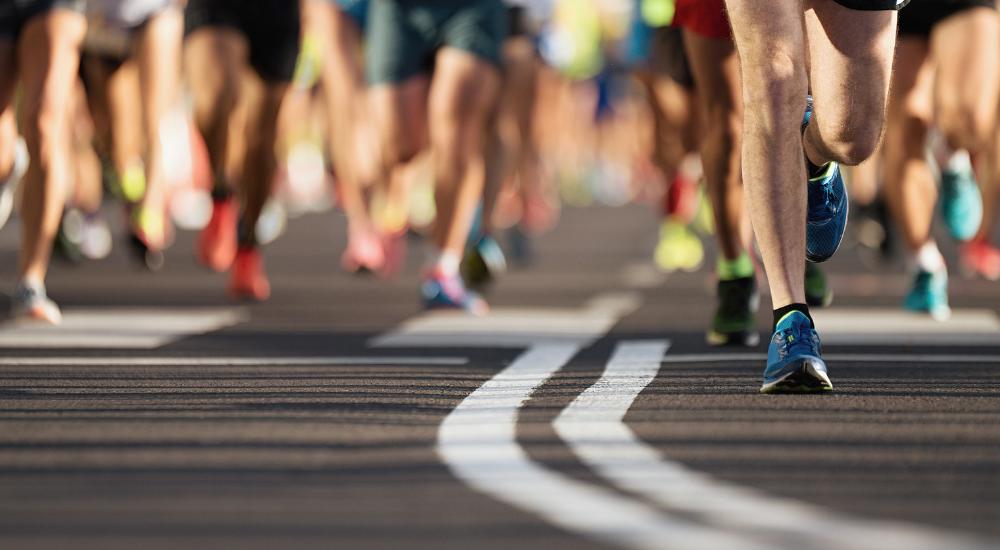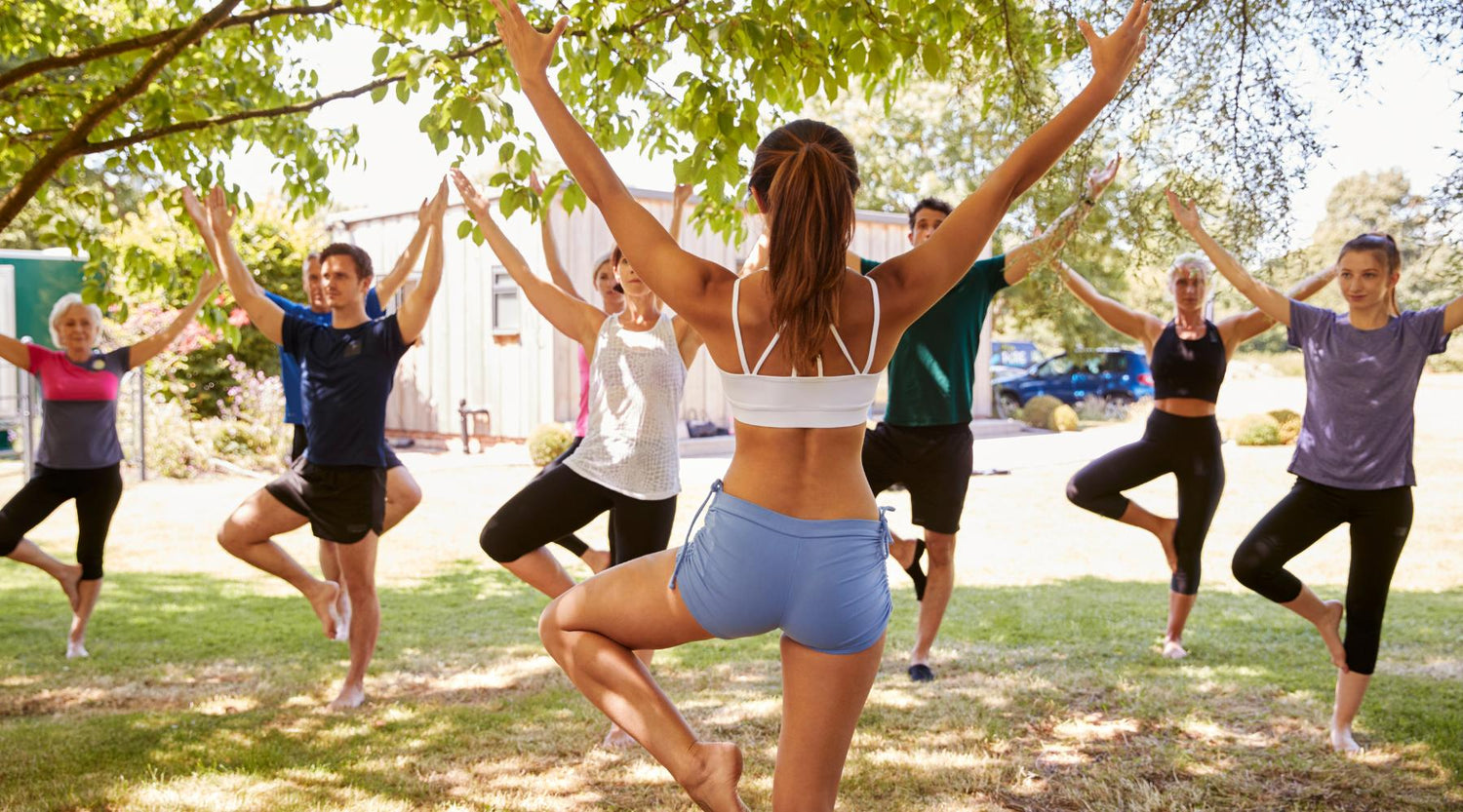National Exercise Day, celebrated on April 18, marks a perfect opportunity to spring into better health and physical fitness. As the sun shines brighter and temperatures rise, it's the ideal time to step outdoors and shake off the inertia of winter.
National Exercise Day isn't just about grand adventures in the wild - it's about embracing everyday activities that boost your fitness levels and contribute to long-term health. This blog will guide you through the myriad benefits of regular physical activity and provide fun, accessible ways to integrate exercise into your daily routine. Whether you're a seasoned athlete or just starting your fitness journey, today is the day to celebrate movement in all its forms.
Key Takeaways:
- Promotion of Physical and Mental Health Benefits: Regular exercise has significant health benefits, including improved cardiovascular health, mental well-being through the release of endorphins, and enhanced overall mood and physical fitness.
- Accessibility and Integration of Exercise into Daily Life: Incorporating exercise into daily routines can be easy, through simple activities like taking stairs, engaging in active video games, or performing energetic household chores.
- Inclusivity for Different Demographics: Everyone from children to older adults can tailor physical activity to their needs and capabilities, enhancing both safety and effectiveness.
The Importance of Regular Physical Activity
Physical activity is a cornerstone of good health, yet many of us struggle to fit exercise into our busy schedules. The benefits of regular physical activity are extensive and well-documented. Physically, it helps control weight, reduce the risk of heart disease, strengthen bones and muscles, and increase longevity. Regular exercise also enhances cardiovascular health, which includes lowering blood pressure and improving heart function.
But the benefits of exercise extend beyond the physical. Regular physical activity significantly impacts mental health, providing a release from the daily stresses of life. Exercise stimulates the production of endorphins, often referred to as 'feel-good' hormones, which can help alleviate symptoms of depression and anxiety. Moreover, staying active can boost overall mood, enhance sleep quality, and sharpen mental acuity.
From a social perspective, engaging in exercise can be a great way to connect with others, whether through organized sports, group fitness classes, or simple walking groups. This social interaction is crucial for mental well-being, helping to foster a sense of community and belonging.
The Centers for Disease Control and Prevention recommend at least 150 minutes of moderate-intensity aerobic activity each week, supplemented by muscle-strengthening activities on two or more days a week. However, any amount of activity is better than none. Incremental changes can lead to significant health benefits. For instance, short bouts of physical activity throughout the day can add up to the weekly recommendations, reducing the risk of chronic diseases and improving overall health.
By understanding the critical role physical activity plays in enhancing quality of life and by finding ways to incorporate it into your daily routine, you can take meaningful steps towards a healthier and happier life. Let National Exercise Day serve as a springboard for establishing and maintaining an active lifestyle that will last all year round.

How to Celebrate National Exercise Day
National Exercise Day is a fantastic opportunity to explore new ways to stay active, whether you’re diving into activities solo or making it a group affair. Here are some creative and enjoyable ways to get moving:
- Join Local Walking or Running Events: Many communities host special events like 5K runs or community walks on National Exercise Day. These events are not only a great way to get your steps in but also connect with fellow fitness enthusiasts in your area. Check local event listings or community boards to find activities near you.
- Try New Group Fitness Classes or Sports: This day is perfect for trying something new. Many gyms and fitness centers offer free trials or special classes in celebration of National Exercise Day. From spinning to water aerobics, or even a local sports club meeting, taking a class can add variety to your exercise routine and keep you motivated.
- Family-Friendly Activities: Getting active with your family is not only beneficial for health but also for strengthening relationships. Plan a family bike ride, go hiking in a nearby park, or have a playful afternoon in the backyard with games like tag or frisbee. These activities are enjoyable and can be adapted to all age groups, making them perfect for family participation.
Incorporating Small Activities for Big Health Gains
Incorporating small bouts of activity throughout your day can significantly contribute to your health and can be easier to manage than one long exercise session. Here are practical tips to seamlessly integrate more physical activity into your daily routine:
- Taking the Stairs Instead of Elevators: Opt for the stairs whenever possible. It’s a fantastic way to increase your heart rate and strengthen your legs. Whether at the office, shopping mall, or in public transport areas, skipping the elevator can add up to a significant amount of extra steps and calories burned over time.
- Energetic Household Chores: Turn chores into a workout session. Activities like vacuuming, mowing the lawn, or vigorous gardening can all be considered moderate exercise. Put on some music and challenge yourself to keep the tempo up – this makes the chores more enjoyable and the workout more intense.
- Engaging in Active Video Games or Dancing: Not all video games are played from the couch! Games that require physical movement can be a fun way to get your whole body moving. Alternatively, put on your favorite tunes and dance around the house. Both are excellent ways to stay active and can easily involve the whole family.
Each of these activities not only promotes physical health but also enhances your mood and energy levels, proving that every little bit does indeed add up. Celebrate National Exercise Day by choosing activities that you enjoy, which will help you stick with them long-term. Remember, the goal is to make exercise a fun and integral part of your everyday life.

Special Considerations for Different Demographics
Exercise isn't one-size-fits-all, and what works for one age group may not be suitable for another. Understanding this can help individuals tailor their activities to fit their specific needs, ensuring safety and effectiveness in their exercise routines.
For Older Adults: Stability and balance exercises are crucial for seniors. Activities like tai chi or standing on one foot help reduce the risk of falls by improving balance and muscle strength. Additionally, flexibility exercises such as stretching or yoga can maintain joint health and mobility, important for daily activities.
For Children and Teens: Kids need about 60 minutes of physical activity each day. Play-based activities that build skills like running, jumping, throwing, and catching are vital. These activities should be fun, varied, and offer opportunities for both structured and free play. Encouraging active play in schools and community settings can help instill a lifelong habit of physical activity.
For Working Adults: Integrating short bouts of brisk activity throughout the day can be especially beneficial. This demographic often struggles with finding time for exercise due to work and family commitments. Quick walks during lunch breaks, using stairs instead of elevators, and standing desks are practical ways to include more movement in daily routines.

National Exercise Day should be more than just a one-off celebration; it's an opportunity to kickstart a sustainable fitness journey. Embrace this day as a starting point to explore new activities, set achievable goals, and gradually build up to a healthier lifestyle. Remember, the journey to fitness doesn't need to be drastic; small, consistent efforts can lead to significant health benefits over time.
Set realistic goals based on your current fitness level and work gradually towards them. Tracking progress, whether through fitness apps or a journal, can provide motivation and help you see the tangible benefits of regular physical activity. Most importantly, choose activities that you enjoy, as this is the best way to ensure you will stick with them.
As we observe National Exercise Day, let's renew our commitment to personal well-being. Make physical activity a fun and regular part of your life, and encourage others to join you on this path. Together, we can move towards a healthier future for everyone.
FAQs
What are some easy ways to celebrate National Exercise Day?
Celebrating National Exercise Day can be as simple as participating in a local walking event, trying a new fitness class, or enjoying a family bike ride. The key is to engage in any physical activity that is enjoyable and feasible, whether alone or with others.
How can I integrate exercise into my busy schedule?
Integrating exercise into a busy schedule can be achieved through small activities that add up, such as using stairs instead of elevators, parking further from store entrances, or having short active breaks during the day to do stretches or quick walks.
What types of exercise are recommended for older adults?
For older adults, exercises focusing on balance and strength are crucial. Activities like tai chi, gentle yoga, or simple balance exercises like standing on one foot can help improve stability and reduce the risk of falls.
What are the benefits of making exercise a regular part of life?
Regular exercise helps improve overall health, reduces the risk of chronic diseases, boosts mental health, and enhances quality of life. It can also increase social interactions through group activities, making exercise both a physical and social benefit.




